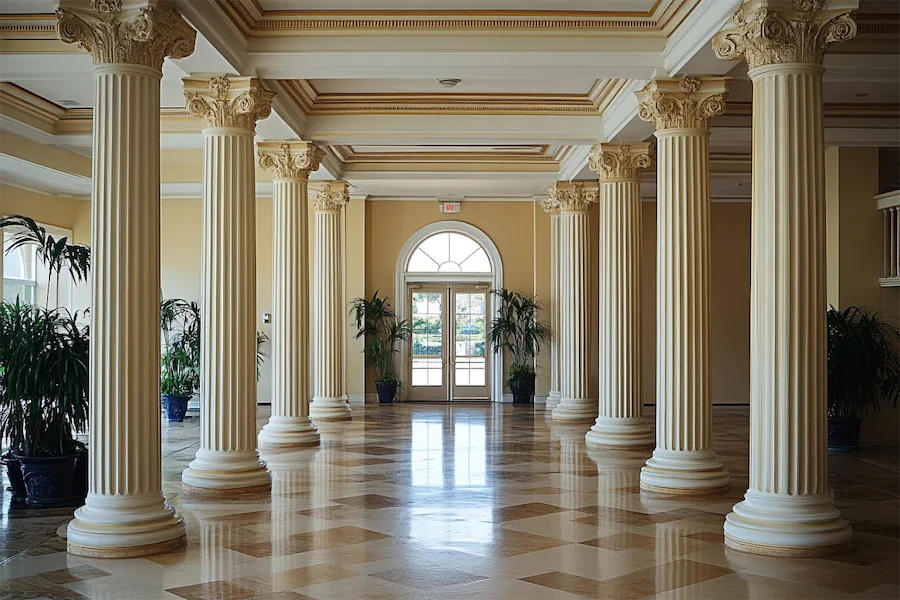Colonial Revival architecture, which gained prominence in the United States during the late 19th and early 20th centuries, sought to celebrate and reintroduce elements from early American colonial architecture. A defining feature of this style is the use of columns, which not only serve structural purposes but also convey a sense of grandeur and historical continuity.
Introduction to Colonial Revival Columns
In Colonial Revival architecture, columns are prominent elements that enhance the aesthetic appeal and convey a sense of formality. These columns are often inspired by classical orders—Doric, Ionic, and Corinthian—reflecting a renewed interest in ancient Greek and Roman architecture. Their application ranges from supporting porticos and porches to framing entrances, contributing to the symmetrical and balanced facades characteristic of the style.
History and Origins of Colonial Revival Columns
The Colonial Revival movement emerged in the late 19th century, partly as a reaction to the ornate and asymmetrical designs of the Victorian era. The 1876 Philadelphia Centennial Exhibition played a pivotal role in rekindling interest in America’s colonial architectural heritage. This movement led to the adaptation of classical elements, including columns, into modern designs, symbolizing a return to simplicity and classical proportions.
Key Features of Colonial Revival Columns
Colonial Revival columns exhibit several distinguishing characteristics:
- Classical Orders: The columns often adhere to the classical orders—Doric (simple and sturdy), Ionic (with scroll-like volutes), and Corinthian (elaborately decorated with acanthus leaves). This adherence to classical design principles underscores the movement’s emphasis on symmetry and proportion.
- Materials: Traditionally, these columns were constructed from wood, aligning with the materials used in early American colonial architecture. In contemporary applications, materials such as fiberglass and composite materials are also utilized, offering durability while maintaining the traditional aesthetic.
- Design and Proportions: The columns are typically proportional to the building’s scale, contributing to the harmonious and balanced appearance of the facade. They often support pediments or entablatures, enhancing the formal and stately presence of the structure.
Applications of Colonial Revival Columns
In Colonial Revival architecture, columns serve both functional and decorative roles:
- Porticos and Porches: Columns are commonly used to support porticos and porches, creating inviting entryways that emphasize the building’s symmetry and classical roots.
- Entrances: Flanking the main entrance with columns or pilasters adds depth and prominence, highlighting the entry as a focal point of the facade.
- Structural Support: Beyond their aesthetic contributions, columns provide essential structural support for overhanging roofs and balconies, ensuring both functionality and visual appeal.
Considerations When Choosing Colonial Revival Columns
When selecting or designing columns for Colonial Revival architecture, several factors should be considered:
- Authenticity: Ensuring that the column design aligns with historical precedents helps maintain the integrity of the Colonial Revival style.
- Material Selection: Choosing appropriate materials that balance durability with traditional aesthetics is crucial, especially in regions with varying climates.
- Proportionality: Maintaining correct proportions relative to the building ensures that the columns complement rather than overwhelm the overall design.
Conclusion
Colonial Revival columns are integral to the style’s architectural expression, embodying a reverence for classical design principles and early American heritage. Their thoughtful incorporation into structures not only enhances visual appeal but also connects contemporary architecture with historical traditions, creating buildings that are both timeless and rooted in the nation’s architectural narrative.
